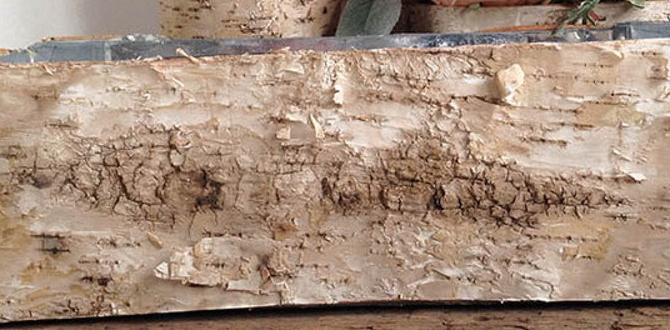Quick Summary: Choosing between Ryobi and Makita nailers? Ryobi offers excellent value and performance for DIYers on a budget, often featuring innovative battery tech. Makita is a top-tier choice for professionals and serious hobbyists, known for robust build quality, advanced features, and consistent power, though typically at a higher price point.
Picking the right nailer can feel a bit overwhelming, especially when you’re just starting out on a woodworking project. You see all these tools, and two names that pop up a lot are Ryobi and Makita. Both make good tools, but what’s the real difference for you and your projects? It’s a common question, and figuring it out makes a big difference in how smoothly your project goes. Don’t worry; we’ll break down what each brand offers, so you can make a smart choice and get nailing with confidence!
Table of Contents
Ryobi vs. Makita Nailers: Which Brand is Right for You?
Hey there, woodworkers and DIY enthusiasts! Jack Shaffer here from Nailerguy, and I know that choosing your go-to tools can be a big decision. Today, we’re diving deep into a question I hear a lot: “Ryobi or Makita nailers?” Both are fantastic brands, but they cater to slightly different needs and budgets. Whether you’re building a birdhouse, framing a deck, or crafting furniture, understanding these differences will help you find the perfect nail gun for the job.
Let’s keep it straightforward. We’ll look at what makes each brand tick, compare their popular models, and help you decide which one will be your trusted partner for countless projects. We’ll cover power, features, durability, battery systems, and, of course, price. By the end, you’ll have a clear picture to make the best choice for your workshop.
Understanding the Basics: What is a Nailer?
Before we compare Ryobi and Makita, let’s quickly touch on what a nailer does. A nail gun is a power tool that drives nails into wood or other materials much faster and more efficiently than using a hammer. They’re essential for tasks like framing, trim work, roofing, and so much more. There are several types, but the most common for DIYers are:
- Framing Nailers: For heavy-duty construction, like building walls or decks.
- Finish Nailers: For attaching trim, molding, and finer woodworking.
- Brad Nailers: For very small, delicate trim work and crafts.
- Pin Nailers: For almost invisible fastening where no nail head is desired.
Cordless electric nailers, powered by batteries, have become incredibly popular because they offer the convenience of pneumatics (air-powered tools) without the need for an air compressor and hose. This is where Ryobi and Makita really shine, offering excellent battery-powered solutions.
Ryobi: The DIYer’s Powerhouse
Ryobi is known for making accessible, high-quality tools that are perfect for homeowners and DIY enthusiasts. They’ve really invested in their ONE+ battery system, meaning one battery can power a huge range of tools, which is a huge cost-saver and convenience booster. When it comes to their nailers, you get innovative features at a price point that’s hard tobeat.
Ryobi Nailer Strengths:
- Value for Money: Ryobi tools are generally more affordable than Makita, making them a great entry point for beginners.
- ONE+ Battery System: If you already own Ryobi ONE+ tools, expanding your collection with a Ryobi nailer is seamless and cost-effective. They offer a wide range of battery amp-hours for different power needs.
- User-Friendly Features: Many Ryobi nailers include features like tool-free depth adjustment and jam clearing mechanisms that make them easy to use right out of the box.
- Innovation: Ryobi often introduces clever features in their tools, like the “AirStrike” technology in their cordless nailers, which uses a pneumatic-like mechanism powered by a motor and battery, eliminating the need for a compressor.
- Availability: Ryobi tools are widely available at major retailers, making them easy to find and purchase.
Ryobi Nailer Considerations:
- Professional Durability: While durable for DIY use, they might not hold up to the extreme daily demands of a professional job site as well as higher-end brands.
- Power Output: For extremely dense woods or demanding framing applications, some Ryobi models might offer slightly less consistent power compared to professional-grade tools.
Popular Ryobi Nailer Models:
- Ryobi ONE+ 18V Cordless 18-Gauge Br Shooter: A fantastic option for trim, molding, and smaller projects. It’s lightweight and easy to handle.
- Ryobi ONE+ 18V Cordless 2-1/2 in. Framing Nailer: Great for DIY framing projects. It offers good power for its class and the convenience of cordless operation.
- Ryobi ONE+ 18V Cordless HYBRID 1/4 in. Brad Nailer: This model offers a unique hybrid approach, able to run on battery or AC power, providing maximum flexibility for home use.
Ryobi’s focus is on providing reliable performance and smart features for the everyday user. Their battery platform is a significant advantage if you’re building out your tool collection from scratch or already invested in the ONE+ system.
Makita: The Professional’s Choice
Makita has a long-standing reputation for building durable, high-performance tools favored by professionals across various trades. Their cordless tools, particularly their 18V LXT and 40V XGT systems, are renowned for their power, reliability, and innovative battery technology. When you pick up a Makita nailer, you’re often getting a tool built for the toughest jobs and designed for efficiency and longevity.
Makita Nailer Strengths:
- Professional-Grade Durability: Makita tools are built to withstand daily use on demanding job sites. They often feature robust construction and high-quality components.
- Performance and Power: Makita nailers consistently deliver strong performance, driving nails cleanly and effectively, even into hard materials. Their battery platforms provide ample power for most tasks.
- Advanced Features: Makita often incorporates cutting-edge features, such as improved motor efficiency, better weight distribution for comfort, and advanced safety mechanisms.
- Extensive Battery Ecosystem: With both the 18V LXT and the more powerful 40V MAX XGT systems, Makita offers a vast range of tools that share batteries, providing flexibility and long runtimes.
- Reputation for Reliability: Makita has a strong track record for producing tools that are dependable and last for years.
Makita Nailer Considerations:
- Higher Price Point: Makita tools generally come with a higher initial cost compared to Ryobi, which can be a factor for budget-conscious DIYers.
- Potentially Overkill for Light DIY: For very occasional or light-duty home projects, the professional-grade features and price might be more than you need.
Popular Makita Nailer Models:
- Makita 18V LXT Lithium-Ion Cordless Brushless 16-Gauge Gun (XBU02Z): A powerful and efficient cordless finish nailer known for its clean drives and consistent performance.
- Makita 18V LXT Lithium-Ion Cordless 15-Gauge Gun (XNB01Z): Ideal for more substantial trim work, offering excellent balance and power.
- Makita 18V LXT Lithium-Ion Cordless Brushless 2-1/2 in. Framing Nailer (XSF02Z): Built for serious framing, this nailer provides the power and speed needed for construction tasks, with the benefits of cordless operation.
- Makita Advancing Cordless Technology with 40V MAX XGT: For tasks requiring immense power and extended runtimes, Makita’s 40V XGT line offers even higher performance nailers.
Makita is synonymous with quality and endurance. If you’re a professional, a serious hobbyist, or someone who plans to use their nailer extensively and wants a tool that will last, Makita is an excellent investment.
Direct Comparison: Ryobi vs. Makita Nailers
Let’s lay it out side-by-side. This table will help you see the key differences at a glance.
| Feature | Ryobi | Makita |
|---|---|---|
| Target User | DIY homeowners, hobbyists, occasional users | Professional tradespeople, serious woodworkers, demanding DIYers |
| Price Range | More budget-friendly | Higher price point |
| Durability (Heavy Use) | Good for DIY, may show wear with daily professional use | Excellent, built for professional job site demands |
| Battery System | ONE+ (18V) – Wide range of tools, good value | 18V LXT & 40V MAX XGT – Extensive, powerful, professional-grade |
| Power & Performance | Sufficient for most DIY tasks, some limitations on very dense materials | Consistent, strong power for demanding applications |
| Innovation | User-friendly features, good “AirStrike” tech | Advanced brushless motors, ergonomic design, leading battery tech |
| Tool Availability | Widely available at major home improvement stores | Available through dedicated tool dealers and online retailers |
Power Source and Battery Systems:
This is a big one! Both brands offer cordless electric nailers. Ryobi primarily uses its 18V ONE+ system. This is fantastic because if you have other Ryobi ONE+ tools, your batteries will work with your nailer, saving you money and clutter. Makita has two main systems: the 18V LXT, which is their workhorse system powering hundreds of tools, and the newer, more powerful 40V MAX XGT system for tools that need extra oomph. Like Ryobi, Makita batteries are interchangeable within their respective systems, offering flexibility.
For most DIYers, Ryobi’s ONE+ system offers excellent battery life and sufficient power. Professionals or those tackling larger, more demanding projects might find Makita’s 18V LXT or even the 40V XGT system offers an edge in sustained power and runtime.
Performance and Features:
Makita generally leads in raw power and consistent performance, especially in their professional-grade models. They are designed to drive nails in dense hardwoods without hesitation. Ryobi’s nailers, especially their “AirStrike” models, are incredibly competent for their price point, offering good performance for typical home improvement tasks. They often include handy features like tool-less depth adjustment and jam clearing, which are essential for easy operation.
Makita’s higher-end nailers might offer more refined features, like improved balance for extended use and more advanced motor technology for better efficiency. However, Ryobi’s focus on user experience means their tools are often very intuitive to pick up and start using.
Durability and Build Quality:
This is where the price difference becomes most apparent. Makita tools are built to endure the rigors of daily professional use. They use high-grade materials and robust construction methods. This means they’ll likely last longer under heavy strain. Ryobi tools are built well for the average DIYer and hobbyist. They are durable and reliable for home projects, but if you were to use them on a construction site five days a week, they might not hold up as long as a Makita.
For someone who tinkers in the garage on weekends, a Ryobi nailer will likely serve them faithfully for many years. For a contractor who depends on their tools to make a living, a Makita offers that professional-grade reassurance.
Cost and Value:
Ryobi offers exceptional value. You get a lot of tool for your money, especially when you factor in the cost of batteries and chargers if you’re entering their ONE+ system. This makes them highly attractive for budget-conscious consumers or those new to power tools. Makita tools represent a significant investment. While more expensive upfront, they are often seen as a long-term investment due to their durability and performance. The cost can be offset if you already own Makita batteries.
If your budget is tight, Ryobi is a smart choice that won’t compromise too much on capability. If you’re looking for a tool you can pass down, or one that simply won’t quit, the extra cost for Makita might be justified.
When to Choose Ryobi
You should lean towards Ryobi if:
- You’re a DIY Homeowner: Tackling weekend projects, home repairs, and moderate woodworking.
- You’re on a Budget: You want a capable tool without breaking the bank.
- You’re Already in the Ryobi ONE+ System: You can leverage existing batteries and chargers, making it a very cost-effective choice.
- You Value Ease of Use: Ryobi tools are generally designed to be straightforward and user-friendly for beginners.
- You Prioritize Versatility within a Battery System: The ONE+ system offers a vast array of tools that work with the same batteries.
Ryobi provides a fantastic entry point into cordless nailers. You can get a good quality tool that will handle most home improvement and hobby projects with ease, all while keeping your wallet happy.
When to Choose Makita
You should consider Makita if:
- You are a Professional Contractor or Tradesperson: Your livelihood depends on your tools, and you need professional-grade durability and performance.
- You are a Serious Woodworker or Hobbyist: You work with tools frequently, potentially with harder woods or more demanding applications, and need consistent power.
- You Demand the Best Durability: You want a tool that can withstand heavy, consistent use for many years.
- You Already Own Makita Batteries: Similar to Ryobi, having existing batteries within their 18V LXT or 40V XGT system makes the investment more palatable.
- You Need Top-Tier Performance: You require the absolute best in power, efficiency, and advanced features for challenging tasks.
Makita represents a commitment to quality and performance that professionals trust. It’s an investment in a tool that will perform reliably time after time.
Tips for First-Time Nailer Buyers
No matter which brand you lean towards, here are a few general tips to help you make your first nailer purchase smooth sailing:
- Identify Your Primary Projects: What will you be using the nailer for most? This helps determine the size and type of nailer (framing, finish, brad). For most DIYers, a 16-gauge finish nailer or an 18-gauge brad nailer is a great starting point.
- Consider the Battery System: If you have other cordless tools, stick with that brand’s battery system to save money and hassle. If starting from scratch, consider which system offers the best range of tools you might need in the future. The efficiency of battery platforms is a significant factor for cordless tools. Visit Tool Ranking for a comprehensive look at battery platform comparisons.
- Check for Key Features: Look for features like tool-free depth adjustment, tool-free jam clearing, and comfortable ergonomics. These make a big difference in usability.
- Read Reviews: See what other users are saying about specific models. Pay attention to common praises and complaints.
- Factor in the “Kit” Cost: If buying a tool bare tool (tool only), remember to add the cost of batteries and a charger. Sometimes, a kit with batteries included is a better deal.
- Safety First: Always wear safety glasses when operating a nailer. Understand the specific safety features of your chosen tool. The Occupational Safety and Health Administration (OSHA) provides guidelines on power-actuated tools, including nail guns.
Frequently Asked Questions (FAQ)
Q1: Which brand is better for a beginner: Ryobi or Makita nailers?
For most beginners, Ryobi is often the better choice. They offer excellent value, are user-friendly, and their ONE+ battery system is very accessible. You can get started with a capable tool without a huge initial investment.
Q2: Can I use Makita batteries with Ryobi nailers, or vice versa?
No, you cannot interchange batteries between Ryobi and Makita tools. Each brand has its own proprietary battery connection system for safety and performance reasons.</




